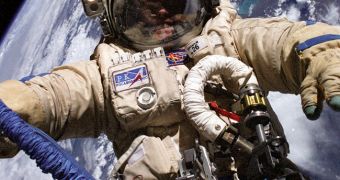When humans finally make their way to Mars, they will not only have to make sure that they don't get contaminated with anything Martian, but also that they do not contaminate the planet with their spacesuits. Ensuring this will not happen is however a very difficult task.
Earth's microorganisms are known to be very resilient, and studies conducted on the International Space Station (ISS) have demonstrated that some species of bacteria can live in the harsh environment of space for months.
As such, it is conceivable that they could hitch a ride on rockets, spacecraft and other equipment, and eventually make their way on our neighboring planet. Future mission planners will have to ensure that contamination is impossible in either direction.
If organisms make their way to Mars, then our search for extraterrestrial life there might be stopped in its tracks, destroying one of the most important reasons we would go there in the first place.
Researchers are already testing future spacesuit designs in the San Rafael desert of Utah, using tiny fluorescent tracers as stand-ins for microbiological communities. Lasers can then be used to establish how the colonies endure simulated Martian missions.
“As long as we have no clue about the potential contamination vectors, we would jeopardize the pristine [quality] of the samples. [Tests will ensure mistakes do not] endanger the entire science of searching for life on Mars,” says Gernot Groemer.
The expert is the lead researcher on the contamination experiments, and the president of the Austrian Space Forum. His team is carrying out spacesuit research to benefit future explorers. A mission to Mars is scheduled to take place about 20 years from now.
The L.I.F.E. (laser-induced fluorescence emission) technique are the basis of the simulation efforts. “The technique can be implemented with a laser pointer and an iPhone,” explains Kinohi Institute leader Michael Storrie-Lombardi.
“At present, once the system is calibrated, it takes only a few seconds to process the raw data if the target is an unknown field sample,” he concluded, quoted by Space.

 14 DAY TRIAL //
14 DAY TRIAL //